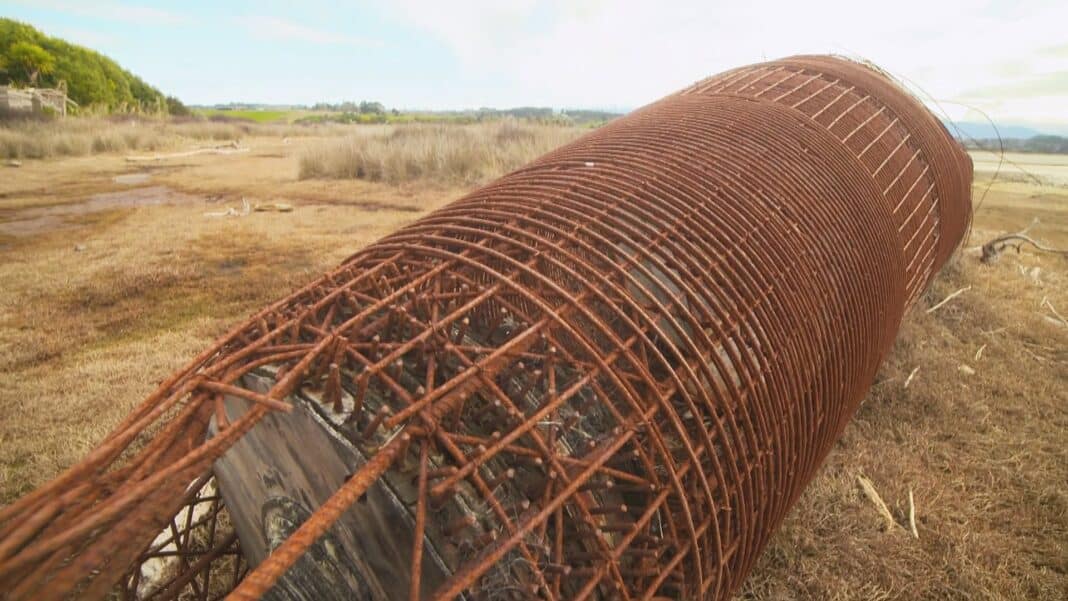New Zealanders are among the most dynamic people on earth.
Over the years, they have built planes, trucks, cars and even tanks.
But there’s one thing that NZ has never been thought to manufacture – its very own submarine. Until now…
As reported by 1 News last week, NZ’s first, and so far, only sub is still where its maker let it, and no one knows how it got there.
On a beach west of Richmond sits the remains of Peter Mackey’s attempt at building a submarine.
The shell has become part of the region’s folklore, with many knowing little about it, including local historians.
However, according to Patrick, a resident whose family used to own the land next to the submarine, Mackey was building it “so he could travel to Antarctica with his dog.”
He said Mackey would bring the steel pieces to the beach two at a time while the aquatic machine was under construction, and Patrick’s family saw it slowly take shape.
“The progress was pretty slow, but it was all manual labour; he had virtually no power tools, bending equipment, or anything like that.”
During that time, he lived beside the submarine in his caravan, using all kinds of DIY techniques to make his life easier.
“His drinking water was coming from one of those ponds up there; he had a pipe going from one of the ponds where the geese swim around.”
“He figured out the pond was higher than where the submarine building site was, so he got a siphon going.”
While Mackey built the sub manually, Patrick believed he wasn’t a stranger to engineering.
“He was very well-spoken and had quite a good education. I saw all the calculations he’d done to deal with all the stresses and strains involved.”
“Looking at the pages of calculations and the formulas he was using, it seemed like he needed to be more knowledgeable when it came to that.”
“You’ve got to know what you’re doing in terms of ballasting it and keeping it on a trim whether it’s up and down that way and that way.”
According to Patrick, Mackey built the submarine’s inner hull out of ferrocement, with a cavity sealed in by a timber outer hull.
Ferrocement is a system of construction using reinforced mortar or plaster applied over an “armature” of meta mesh, woven, expanded metal, or metal fibres, and closely spaced thin steel rods such as rebar.
A precursor to reinforced concrete, ferrocement is used to construct relatively thin, hard, strong surfaces and structures in many shapes, such as hulls for boats, shell roofs, and water tanks.
Then, in the cavity in between, he would pump water in and out of that to maintain the buoyancy.
A detachable keel on the bottom would explode if the submarine started descending out of control.
Despite his conceptual design, the submarine never made it out to sea.
A cannabis bust mid-way through construction saw Mackey sent to prison and the sub left on the beach to rust.
“He was growing a bit of dope and got busted for it and ended up with a bit of a prison term; quite a lot of stuff went missing, I think, and he probably lost heart after that.”
“Mentally, obviously, a lot was going on there. There was always something going on up above.”
“He was onto something, but maybe more successful with the cannabis operation.”
But Patrick wishes the vessel could have made it out to sea or be treated as part of the region’s history.
“When he got it to the point it is now, but not buckled up and rusted, it was quite an impressive piece of engineering.”
“I always thought it would make a wonderful sculpture.”
“It’s a shame that didn’t happen to it because that would have kept it as a historical piece at least.”






